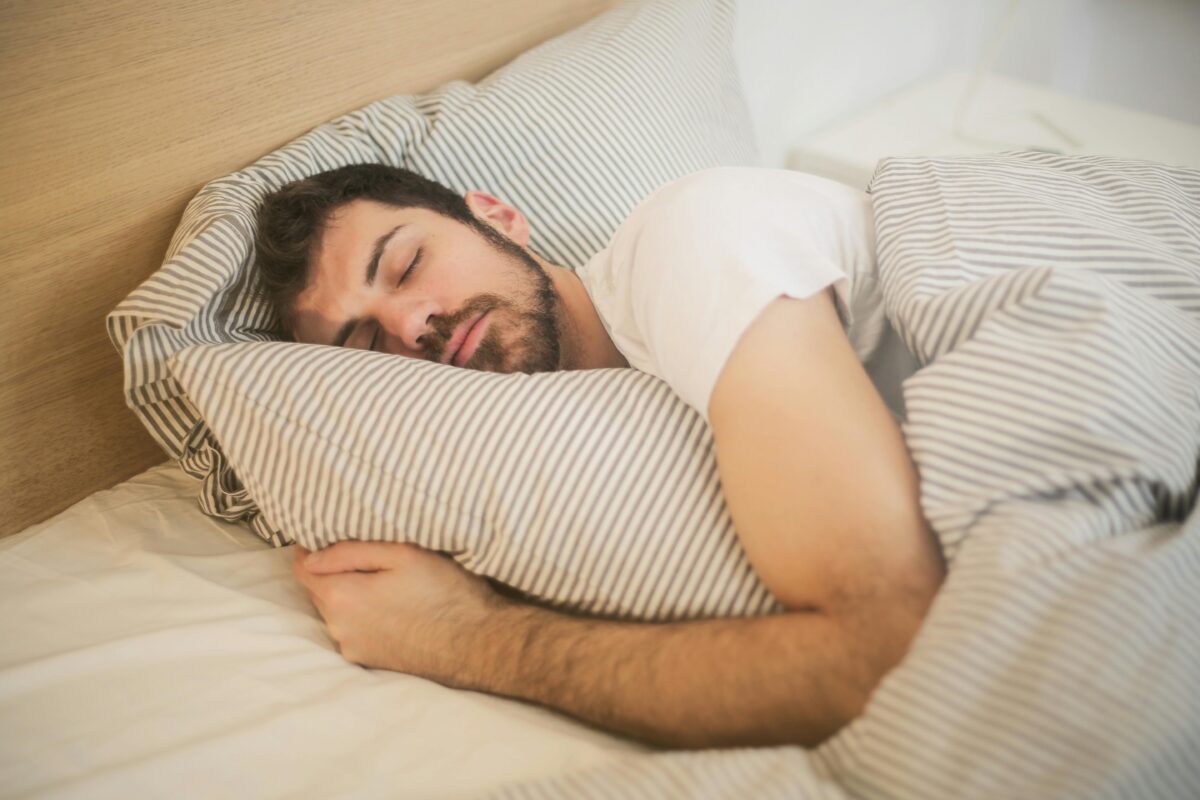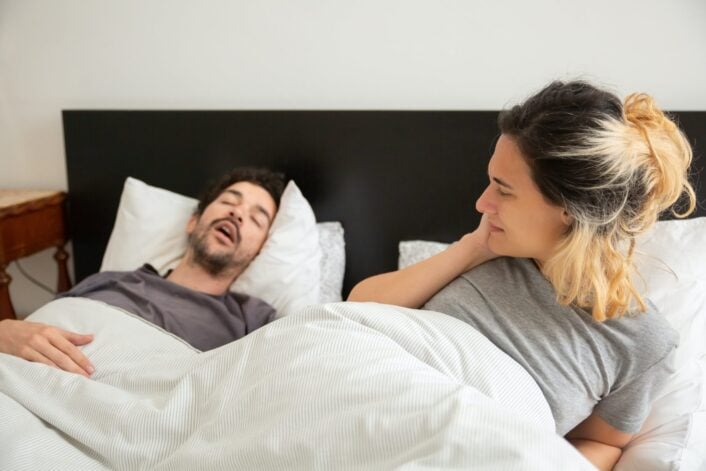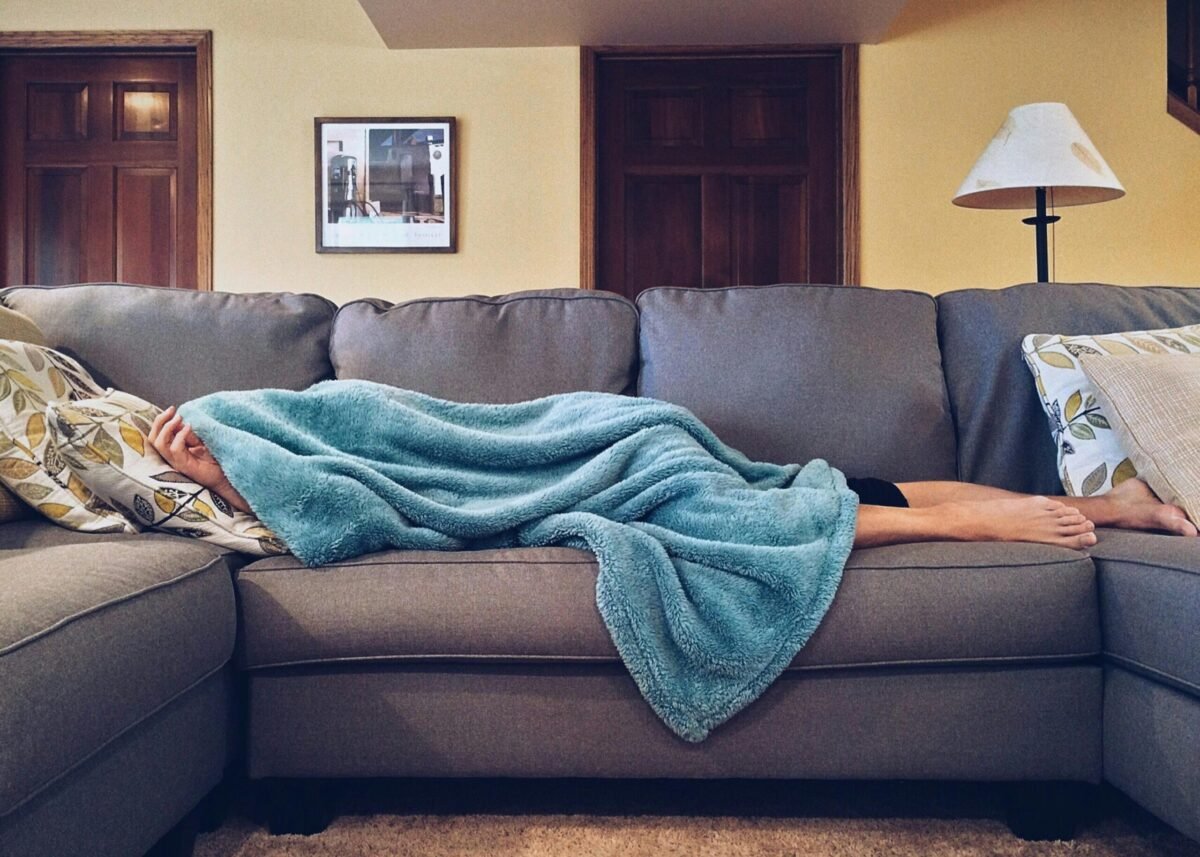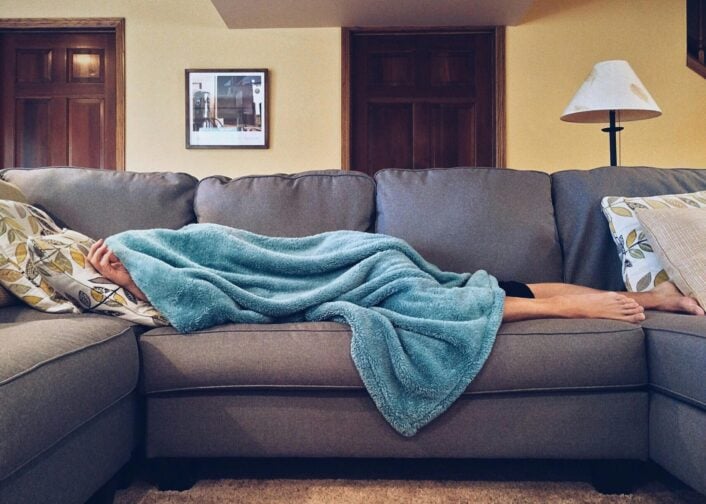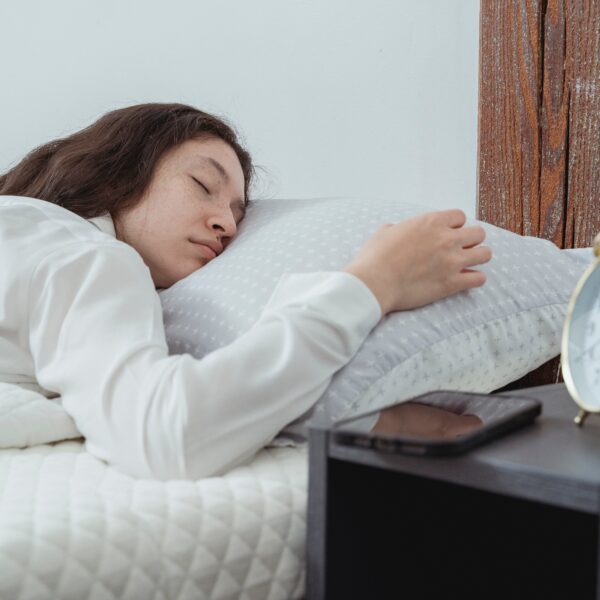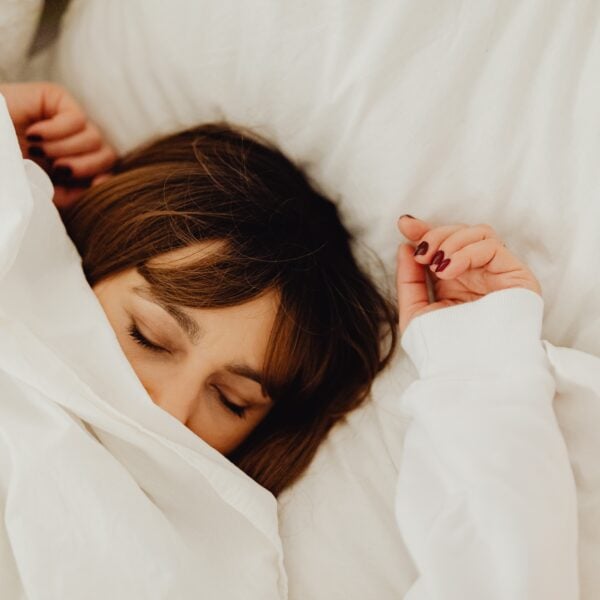Deep Sleep: Is Sleep Depth Genetic?
Aira
on
August 12, 2024
Overview
Ever wondered why some people seem to sleep through any common forms of distraction while others wake at the slightest noise? Sleep depth, a measure of how deeply and restfully one sleeps, is a critical component of overall sleep quality. It determines how rejuvenated a person feels upon waking and how well their body and mind recover during the night.
Deep sleep, also known as slow-wave sleep, is especially vital as it plays a crucial role in overall health. Understanding the genetic basis of sleep depth can help identify individuals who are most susceptible to sleep disturbances.
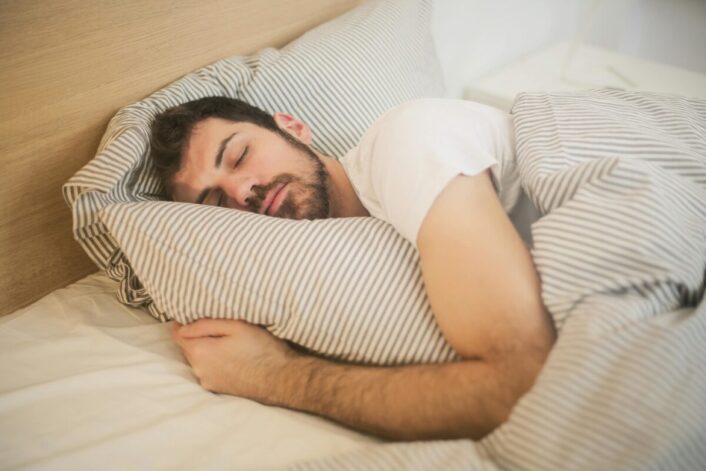
What is Sleep Depth?
Sleep depth refers to the quality and intensity of sleep a person experiences during the night. During deep sleep, the brain waves slow down significantly, and the body undergoes essential processes such as tissue repair, muscle growth, cellular repair, and hormone regulation.
This phase of sleep is critical for memory consolidation, learning, and overall cognitive function. Lack of deep sleep can lead to daytime drowsiness, poor concentration, and increased risk of chronic health conditions like cardiovascular diseases and obesity.
How Do You Measure Sleep Depth?
Sleep depth is typically measured using polysomnography (PSG), a comprehensive sleep study that monitors various physiological parameters during sleep. PSG involves attaching electrodes to the scalp to measure brain activity (electroencephalography or EEG), eye movements (electrooculography or EOG), and muscle activity (electromyography or EMG). These measurements help classify sleep into different stages, including deep sleep (slow-wave sleep) and rapid eye movement (REM) sleep.
Deep sleep is characterized by synchronized slow brain waves known as delta waves on the EEG, along with minimal muscle activity and a reduced heart rate. The amount of time spent in deep sleep, as a percentage of total sleep time, is a key indicator of sleep depth. Typically, adults should aim for about 20-25% of their total sleep time in deep sleep to ensure adequate restorative sleep.
In addition to PSG, wearable devices such as fitness trackers and smartwatches use accelerometers and heart rate variability to estimate sleep stages, including deep sleep. While not as precise as PSG, these devices can provide useful insights into sleep patterns and trends over time, helping individuals understand their sleep depth and make informed adjustments to their sleep habits and routines.
Is Sleep Depth Good for the Health?
Sleep depth, particularly deep sleep or slow-wave sleep, is crucial for overall health and well-being. During deep sleep, the body undergoes essential processes that promote physical and mental health. Scientific studies have shown several health benefits associated with adequate deep sleep:
- Memory and Learning: Deep sleep plays a vital role in memory consolidation, helping to solidify memories and information learned during the day.
- Physical Restoration: Deep sleep is a time when the body repairs tissues, muscles, and bones. It also stimulates growth and development in children and adolescents.
- Immune Function: Deep sleep is linked to immune system function. Adequate deep sleep helps the body defend against infections and supports overall immune health.
- Mood Regulation: Deep sleep contributes to emotional regulation and helps maintain stable moods. It can reduce the risk of mood disorders like depression and anxiety.
- Cardiovascular Health: Research suggests that insufficient deep sleep may contribute to cardiovascular diseases such as hypertension and heart disease.
Prioritizing sufficient and high-quality deep sleep is essential for maintaining optimal health across various aspects of life.
Is Sleep Depth Genetic?
ADA Gene
Slow wave oscillations in the electroencephalogram (EEG) during sleep are indicators of sleep need and intensity, crucial elements in homeostatic sleep regulation. The expression of the adenosine deaminase gene (ADA) plays a significant role in sleep homeostasis. A common functional variant (ADA G22A; SNP rs73598374) has been linked to deeper, more efficient sleep.
In a 2012 study, researchers investigated this link using data from the Epidemiologic Sleep Study (EPISONO) in São Paulo, Brazil. They analyzed the sleep patterns of 800 individuals who underwent full-night polysomnography and ADA G22A genotyping. The study focused on the EEG spectral power, which measures brain activity during sleep, using signals from various EEG electrodes.
Comparisons were made between individuals with different ADA G22A genotypes, specifically between those with the GG genotype and those carrying the A allele. The analysis included the entire sample as well as a subset of 120 individuals matched for age, gender, body mass index, caffeine intake, presence of sleep disturbances, and sleep-disturbing medication.
Results showed that A allele carriers had higher delta spectral power during Stage 1 and Stages 3 and 4 of sleep, as well as increased theta spectral power during Stages 1, 2, and REM sleep. These findings were consistent across both the whole sample and the matched subset. The higher EEG spectral power in A allele carriers suggests their sleep is more intense.
This study confirms that the ADA G22A polymorphism significantly influences sleep homeostasis by affecting specific components of the sleep EEG. Understanding such genetic variations helps explain why individuals experience different sleep qualities and intensities, providing insights into personalized approaches to improving sleep health.
BDNF Gene
EEG slow waves are a key feature of deep non-REM (NREM) sleep and are believed to reflect the restorative functions of sleep. Studies suggest that the increase in sleep slow waves after sleep deprivation is linked to plastic changes in synapses, with brain-derived neurotrophic factor (BDNF) playing a crucial role in this homeostatic regulation. The Val66Met polymorphism, a functional SNP rs6265 that causes valine (Val) to methionine (Met) substitution, encodes pro-BDNF that affects the secretion of mature BDNF protein.
In another 2012 study, researchers explored whether this genetic variation contributes to differences in sleep slow wave activity (SWA) among individuals. The study took place in a sleep laboratory with a temporal isolation unit, involving 11 participants with the Met allele and 11 matched Val/Val homozygotes. Participants underwent 40 hours of prolonged wakefulness. The researchers measured cognitive performance, subjective state, and EEG activity during baseline and after sleep deprivation.
Results showed that Val/Val homozygotes had better accuracy on a working memory task compared to Met allele carriers. This difference was not due to variations in sleepiness, well-being, or attention. In both baseline and recovery nights, Val/Val homozygotes exhibited higher deep stage 4 sleep and NREM sleep intensity, as measured by EEG SWA (0.75-4.5 Hz), particularly in the first NREM sleep episode. Increased activity in higher EEG frequencies (>6 Hz) during wakefulness and REM sleep differed from the effects of prolonged wakefulness.
The study concluded that BDNF significantly influences sleep slow-wave oscillations, indicating that genetic differences in neuronal plasticity affect NREM sleep intensity in humans. This insight helps to understand how genetic factors contribute to individual variations in sleep quality and the restorative processes of sleep.
What Other Factors Can Affect Sleep Depth?
Environmental factors play a significant role in influencing sleep depth, impacting both the duration and quality of restorative sleep. Understanding these factors can help individuals optimize their sleep environment for better overall health and well-being. Here are several key environmental factors supported by scientific research:
- Light Exposure: Light is a critical regulator of the body’s internal clock, or circadian rhythm, which influences sleep-wake cycles. Exposure to natural light during the day helps synchronize this rhythm, promoting alertness and wakefulness. However, artificial light at night, particularly blue light emitted by screens (phones, tablets, computers), suppresses the production of melatonin, a hormone that regulates sleep. This disruption can delay the onset of sleep and reduce deep sleep duration.
- Noise Pollution: Environmental noise, such as traffic, construction, or household sounds, can disrupt sleep patterns. Even low-level noises can increase arousal from sleep stages, including deep sleep, affecting sleep quality and duration. Continuous noise exposure can lead to chronic sleep disturbances and contribute to various health issues.
- Temperature and Humidity: The ambient temperature and humidity of the sleep environment play a role in sleep comfort and quality. Extremes in temperature, whether too hot or too cold, can disrupt sleep onset and maintenance. Ideally, a slightly cool and well-ventilated room is conducive to better sleep. High humidity levels can also make sleep uncomfortable and disrupt sleep architecture.
- Bedding and Mattress Quality: The comfort and support provided by bedding, pillows, and mattresses significantly influence sleep quality. An uncomfortable mattress or pillows that do not provide adequate support can lead to discomfort, frequent tossing, and turning, and disrupted sleep. Choosing appropriate bedding that suits individual preferences and sleep positions is crucial for promoting restorative sleep.
- Sleep Environment: Factors such as room darkness, clutter, and overall bedroom ambiance contribute to sleep quality. A dark and quiet environment signals the body that it’s time to rest. Clutter and disorganization may create mental stress and inhibit relaxation conducive to sleep.
- Air Quality: Poor indoor air quality, caused by pollutants, allergens, or irritants, can disrupt sleep. Allergies or respiratory conditions exacerbated by indoor air pollutants can lead to nasal congestion, coughing, or discomfort, disrupting sleep continuity and depth.
- Sleep Hygiene Practices: Personal habits and routines around sleep, known as sleep hygiene, significantly impact sleep depth. Practices such as maintaining a regular sleep schedule, avoiding stimulating activities close to bedtime, and establishing a relaxing bedtime routine promote deeper and more restful sleep.
Understanding and addressing these environmental factors can help individuals create a sleep-friendly environment conducive to achieving and maintaining adequate sleep depth. By optimizing the sleep environment and adopting healthy sleep habits, individuals can enhance their overall sleep quality and improve their physical, mental, and emotional well-being.
What is the Difference Between Light Sleep, Deep Sleep, and REM?
Light sleep, deep sleep, and REM (rapid eye movement) sleep are distinct stages of the sleep cycle, each characterized by unique physiological and neurological activities:
- Light Sleep (Stage N1 and N2): Light sleep occurs at the beginning of the sleep cycle and comprises about 50-60% of total sleep time. During this stage, the body starts to relax, and brain activity slows down. It is relatively easy to wake someone from light sleep, and muscle tone remains intact. Eye movements may slow, and occasional muscle twitches can occur.
- Deep Sleep (Stage N3, also known as Slow-Wave Sleep): Deep sleep is the most restorative stage, typically occurring during the first half of the night. It constitutes about 20-25% of total sleep time in healthy adults. Deep sleep is characterized by slow delta waves on EEG, indicating synchronized and deep brain activity. During this stage, blood pressure drops, breathing slows, and the body experiences reduced muscle activity. Deep sleep is crucial for physical restoration, immune function, and memory consolidation.
- REM Sleep: REM sleep occurs periodically throughout the night and increases in duration as the night progresses, constituting about 20-25% of total sleep time. It is characterized by rapid eye movements, irregular breathing, and increased brain activity similar to wakefulness. Despite the brain’s heightened activity during REM sleep, the body’s muscles are typically paralyzed (except for minor twitches), preventing movements. REM sleep is essential for cognitive functions such as learning, memory consolidation, and emotional regulation.
Each stage of sleep plays a vital role in maintaining overall health and well-being. Understanding these stages helps individuals recognize the importance of achieving a balanced sleep cycle for optimal physical and cognitive function.
What is the Best Time to Sleep for the Best Sleep Depth?
The best time to sleep for optimal sleep depth is closely tied to an individual’s circadian rhythm, a natural internal process that regulates the sleep-wake cycle. Generally, the ideal time for most people to go to sleep is between 9 PM and midnight. This window aligns with the body’s production of melatonin, a hormone that promotes sleep, which typically begins in the evening as it gets dark.
Research indicates that going to bed early enough to allow for 7 to 9 hours of sleep maximizes the opportunity to experience sufficient deep sleep. Deep sleep, or slow-wave sleep, predominantly occurs in the early part of the night. Therefore, sleeping within this window can help ensure that individuals reach the necessary stages of deep sleep essential for physical restoration, memory consolidation, and overall health.
Some people, known as “morning larks,” naturally feel sleepy earlier in the evening and wake up early, while “night owls” tend to feel alert later and wake up later. These tendencies are influenced by genetic variations affecting circadian rhythms.
Benefits of Sleep Depth
Sleep depth, particularly deep sleep, offers numerous benefits that are crucial for maintaining overall health and well-being. Here are some of the key benefits, supported by scientific research:
Physical Restoration
During deep sleep, the body undergoes critical repair processes. Growth hormone secretion increases, which aids in tissue repair and muscle growth. This stage of sleep is essential for physical recovery from daily activities and exercise, helping to rebuild muscles and heal any damage. This is why athletes and physically active individuals particularly benefit from adequate deep sleep.
Immune System Support
Deep sleep plays a vital role in strengthening the immune system. During this phase, the body produces cytokines, proteins that help fight infections and inflammation. Research shows that people who do not get sufficient deep sleep are more susceptible to illnesses such as colds and flu, as their immune response is compromised.
Reduced Stress and Improved Mood
Napping has been shown to reduce stress and improve mood. A nap can lower cortisol levels, the hormone associated with stress, thus helping the body relax and recover. Additionally, napping increases the production of serotonin, a neurotransmitter that promotes feelings of well-being and happiness. This can lead to an overall improvement in mood and emotional stability.
Cognitive Function and Memory Consolidation
Deep sleep is crucial for cognitive processes, particularly memory consolidation. During this stage, the brain processes and organizes information acquired throughout the day, transferring it from short-term to long-term memory. Studies have shown that adequate deep sleep improves learning, problem-solving skills, and overall cognitive performance.
Emotional Regulation
Deep sleep helps regulate emotions and maintain mental health. During deep sleep, the brain processes emotional experiences, which helps to mitigate the effects of stress and anxiety. Lack of deep sleep is linked to mood disorders such as depression and anxiety, highlighting its importance for emotional stability.
Metabolic Health
Adequate deep sleep is associated with better metabolic health. It helps regulate the body’s use of insulin, preventing insulin resistance, which can lead to type 2 diabetes. Poor deep sleep has been linked to weight gain and obesity due to hormonal imbalances that affect appetite and food intake.
Cardiovascular Health
Deep sleep contributes to cardiovascular health by lowering heart rate and blood pressure, allowing the cardiovascular system to rest and recover. Chronic lack of deep sleep is associated with increased risks of hypertension, heart disease, and stroke. Studies have shown that maintaining good sleep depth can reduce these risks and support heart health.
Detoxification of the Brain
Recent research suggests that deep sleep plays a role in the brain’s detoxification process. The glymphatic system, which removes waste products from the brain, is most active during deep sleep. This process helps clear out toxins that accumulate during wakefulness, including beta-amyloid, which is linked to Alzheimer’s disease.
LifeDNA’s Sleep Depth Trait Report
Unlock the secrets to your best night’s sleep with LifeDNA’s Sleep Depth Trait Report. At LifeDNA, we understand that sleep is a cornerstone of health and wellness, and our scientifically backed Sleep Report is designed to help you achieve optimal sleep based on your unique genetic profile.
Discover how your genes influence your sleep patterns and needs. Our comprehensive Sleep Depth Trait Report delves into the genetic factors that affect your sleep quality, offering personalized insights to help you make informed decisions about your sleep habits. Whether you’re struggling with insomnia, looking to improve your deep sleep, or simply curious about your sleep genetics, our report provides the answers you need.
As you age, your body’s requirements evolve, and so should your wellness strategies. LifeDNA’s Sleep Depth Trait Report guides you through these changes, offering tailored recommendations to enhance your sleep quality at every stage of your life. By understanding your genetic predispositions, you can adopt practices that align with your body’s natural rhythms, ensuring you wake up feeling refreshed and rejuvenated.
Beyond sleep, LifeDNA offers a wealth of insights with nearly 200 trait reports across our Wellness Report, Vitamins and Supplements Report, Nutrition Report, Fitness Report, Personality and Cognition Report, and Skincare Report. For those seeking even more detailed information, our premium Age-Related Report and Methylation Genes Report provide advanced insights into your genetic makeup.
Start your wellness journey today with LifeDNA. By availing of our personalized plans, you’ll gain access to a wealth of knowledge tailored specifically to your genetic profile. Take the first step towards a healthier, more informed lifestyle by exploring our range of reports and finding the perfect plan for you. Unlock the power of your genetics and transform your health with LifeDNA. Embrace the future of personalized wellness and start living your best life today.
References
- https://www.healthline.com/health/deep-sleep
- https://choosemuse.com/blogs/news/deep-sleep-tracking#:~:text=To%20measure%20sleep%20quality%2C%20sleep,electrical%20activity%20in%20the%20brain.
- https://www.sleepfoundation.org/stages-of-sleep/deep-sleep#:~:text=During%20deep%20sleep%2C%20your%20body,View%20Source%20.
- https://www.ncbi.nlm.nih.gov/pmc/articles/PMC3634295/
- https://www.sleepfoundation.org/bedroom-environment/light-and-sleep#:~:text=Light%20exposure%20at%20night%20can,deeper%2C%20more%20restorative%20sleep%20stages.
- https://amerisleep.com/blog/humidity-and-sleep/#:~:text=The%20relationship%20between%20humidity%20and%20sleep%20can%20be%20complex%2C%20as,sleep%20but%20more%20light%20sleep.
- https://healthy.kaiserpermanente.org/health-wellness/health-encyclopedia/he.stages-of-sleep.hw48331#:~:text=Stage%20N1%20occurs%20right%20after,wave%20(delta)%20brain%20activity.
- https://time.com/3183183/best-time-to-sleep/
- https://www.webmd.com/sleep-disorders/deep-sleep-deep-clean
- https://www.mayoclinic.org/diseases-conditions/insomnia/expert-answers/lack-of-sleep/faq-20057757#:~:text=Yes%2C%20lack%20of%20sleep%20can,if%20you%20do%20get%20sick.
- https://essayhub.com/study/the-impact-of-sleep-on-learning-and-memory
- https://www.lifespan.org/lifespan-living/sleep-obesity-and-how-they-are-related#:~:text=Effects%20of%20lack%20of%20sleep%3A&text=Leptin%20and%20ghrelin%20are%20hormones,increasing%20calories%20and%20weight%20gain.
- https://www.medicalnewstoday.com/articles/how-quality-sleep-can-reduce-the-risk-of-heart-disease-and-stroke#:~:text=Borson%20said%20studies%20show%20people,heart%20rate%2C%20and%20cardiovascular%20stability
- https://uwo.ca/se/thrive/blog/2024/the-role-of-sleep-on-brain-function.html#:~:text=Brain%20Detoxification,for%20maintaining%20optimal%20brain%20health.
*Understanding your genetics can offer valuable insights into your well-being, but it is not deterministic. Your traits can be influenced by the complex interplay involving nature, lifestyle, family history, and others.
Our reports and suggestions do not diagnose or treat any health conditions or provide any medical advice. Consult with a healthcare professional before making any major lifestyle changes or if you have any other concerns about your results.
